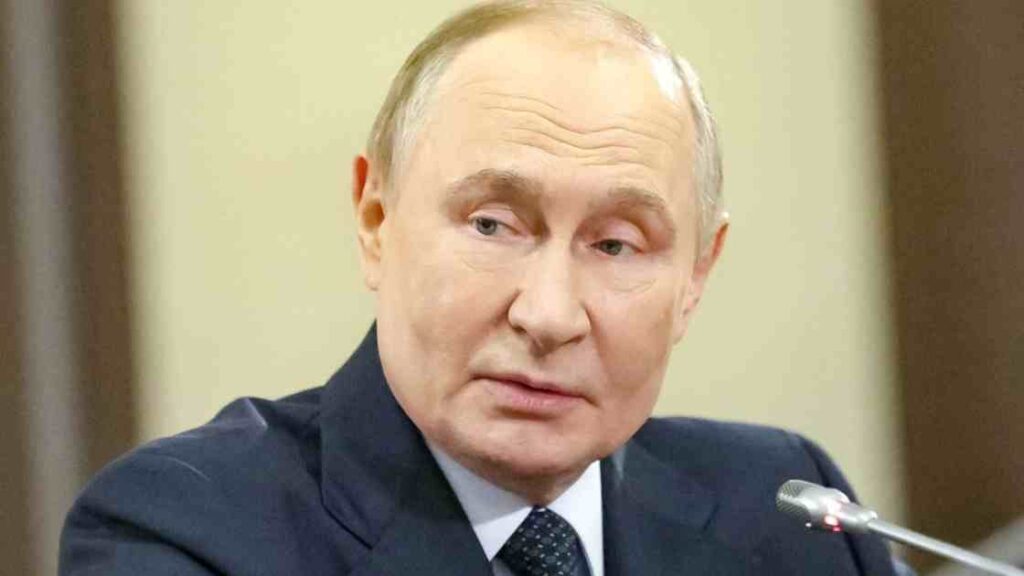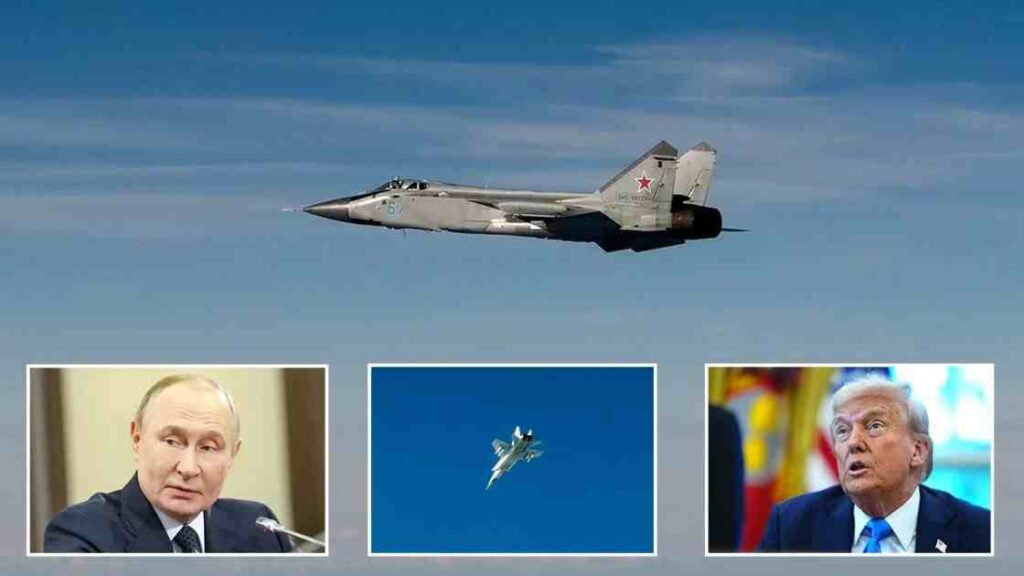NATO Alliance Tested as Moscow Escalates Aggressive Tactics Across Europe
TALLINN, Estonia — Three Russian MiG-31 fighter jets brazenly violated Estonian airspace on Friday in what officials are calling an “unprecedentedly brazen” incident that highlights Vladimir Putin’s escalating strategy to destabilize Europe from within.
The Incident: 12 Minutes of Airspace Violation
The Russian aircraft crossed into Estonian territory near Vaindloo Island in the Gulf of Finland, operating without transponders or flight plans while ignoring all communications from Estonian air traffic control. Italian F-35 jets deployed under NATO’s Baltic Air Policing Mission were scrambled to intercept the intruding aircraft during the 12-minute violation.
Major Taavi Karotamm, spokesperson for the Estonian Defence Forces, confirmed the Russian planes flew parallel to Estonia’s border from east to west, avoiding the capital city of Tallinn.

Expert Analysis: Putin’s Calculated Strategy
“Sowing Fear” Across Europe
Yuriy Boyechko, chief executive of the US-based non-profit Hope For Ukraine, warns that these incidents are part of a deliberate hybrid warfare strategy.
“We see Putin escalating his provocations against NATO because he feels that, right now, he has a window of opportunity to sow fear in the hearts of European citizens so they start voting for pro-Russian politicians,” Boyechko told reporters. “That is how he will gain control over the entire continent of Europe.”
Calls for Stronger NATO Response
Boyechko pointed to Turkey’s decisive 2015 response when it shot down a Russian jet after a five-minute airspace violation, noting that Russia ceased violations of Turkish airspace after that incident.
“The Russians officially started a hybrid war against NATO because there is no strong response from NATO to these acts of aggression by the Russian army,” he explained.
Official Reactions: “Extremely Dangerous Provocation”
Estonian Leadership Responds
Foreign Minister Margus Tsahkna called the incident “unprecedentedly brazen,” revealing that Russia has violated Estonian airspace four times this year, but never on such a scale. He urged that Russia’s “increasingly extensive testing of boundaries and growing aggressiveness must be met with a swift increase in political and economic pressure.”
EU and NATO Statements
Kaja Kallas, the EU’s foreign policy chief and former Estonian Prime Minister, condemned the incursion as “an extremely dangerous provocation” that “further escalates tensions in the region.”
NATO spokesperson Allison Hart characterized the incident as “another example of reckless Russian behaviour and NATO’s ability to respond.”
Baltic Security Concerns Intensify

Pattern of Escalation
The Baltic states — Estonia, Latvia, and Lithuania — along with Poland, have long been viewed as potential targets should Russia risk attacking NATO. All four countries are strong Ukraine supporters, making repeated airspace violations particularly concerning as they suggest Moscow is testing NATO’s resolve.
Broader Context
The Estonian incident follows recent drone incidents over Poland and other NATO states, creating a pattern of aggressive behavior that has rattled European governments as efforts to halt the war in Ukraine continue to struggle.
Additional Provocations in the Baltic Sea
In a related incident, Poland’s Border Guard reported that two Russian fighter jets performed a low pass over the Petrobaltic platform in the Baltic Sea, violating the platform’s safety zone. Polish Armed Forces and other services were immediately notified.
Warning Signs of Expanding Conflict
Expert Concerns
Former Ukrainian Interior Ministry adviser Anton Geraschenko emphasized the urgency of the situation, drawing parallels to the 2015 Turkish response:
“The three MiG-31 of the Russian air force that have invaded Estonia’s airspace are the aircraft that launch Kinzhal missiles,” he warned. “The war against Europe is already in progress, and it will expand.”
NATO’s Defensive Posture
NATO maintains dozens of fighter jets on round-the-clock alert across Europe to respond to unannounced military flights or civilian aircraft that lose communication with air traffic controllers. While NATO fighters scramble hundreds of times annually to intercept aircraft — many Russian warplanes flying near member state airspace — actual border crossings remain relatively rare.
Analysis: Hybrid Warfare Strategy
Security analysts agree that Russia’s approach combines military intimidation with political manipulation, forming a central pillar of Moscow’s broader strategic objectives. The goal appears to be weakening European democracies by spreading fear and potentially influencing electoral outcomes in favor of pro-Russian candidates.
This developing story highlights the ongoing tensions between Russia and NATO as Moscow continues to test Western resolve through increasingly aggressive provocations across European airspace.






